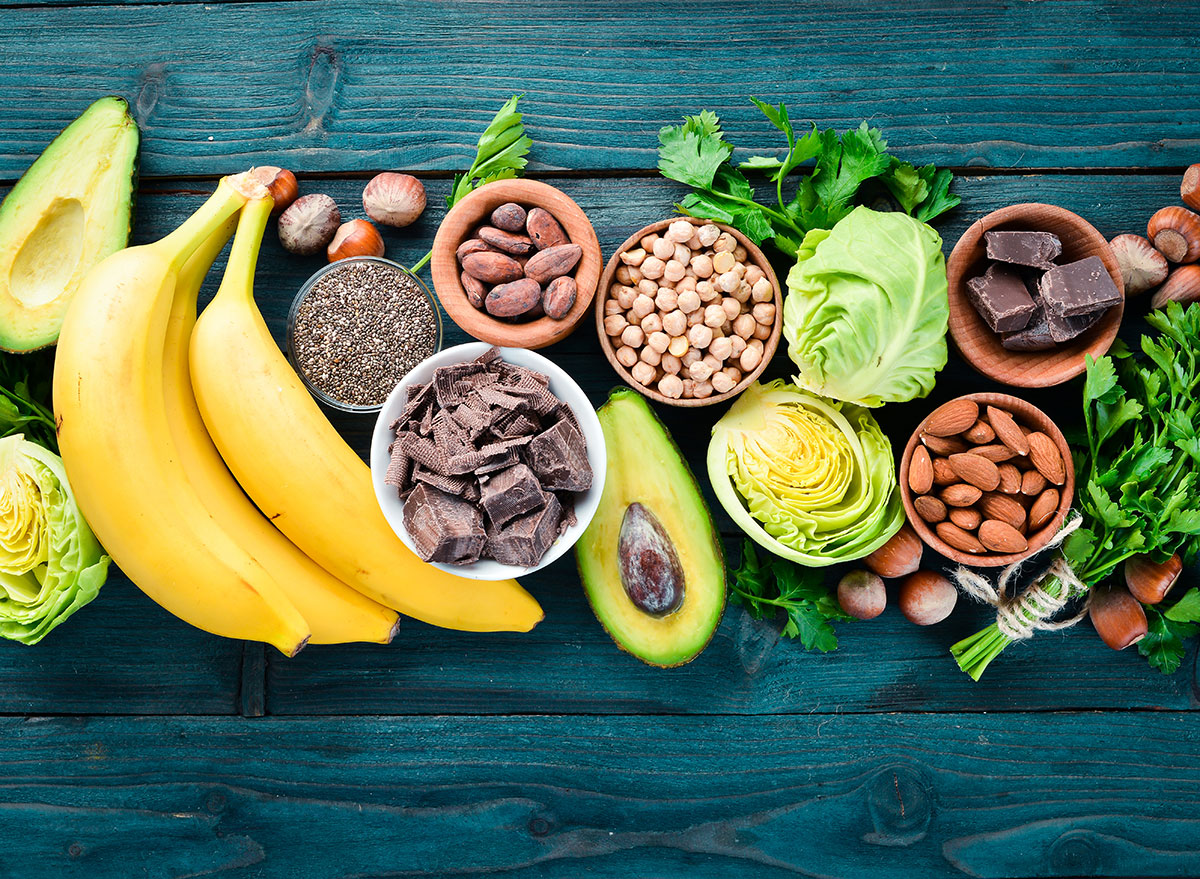80% of Americans Are Deficient in This Mineral That Controls Sugar Cravings

Trying to cut down on sugar can be an exercise in white-knuckle willpower, but it’s helpful to shift your focus away from what you’re not eating to, instead, what you should start incorporating into your diet: magnesium-rich foods.
This is especially true if you’re craving chocolate, according to Susan Yanovski, MD, co-director in the Office of Obesity Research at the National Institute of Diabetes and Digestive and Kidney Diseases. (Related: The 7 Healthiest Foods to Eat Right Now.)
“Because chocolate is high in magnesium, it’s been suggested that a deficiency may play a role in these cravings,” she says. “This is a research area that needs more investigation, but it does present an intriguing possibility in terms of what might be the underlying cause of these cravings.”
She says that up to 80% of people in the U.S. may be deficient in the essential mineral, and research indicates we’re simply not getting enough of it through diet alone. A research review published in the journal Open Heart called the situation “a public health crisis,” particularly because adequate magnesium doesn’t just keep your hands out of the candy jar—it also plays a critical role in bone health, heart function, digestion, sleep, cellular health, and even mood and energy levels.
Chronically low levels could increase your chances of having high blood pressure, heart disease, type 2 diabetes, and osteoporosis, according to the Mayo Clinic.
Fortunately, there are plenty of healthy food choices that let you load up on the mineral. The cacao in chocolate is a rich source of magnesium, which means you can get the unsweetened powder—many brands offer cacao-only options—and throw a little into your next smoothie, for example. You can also get more magnesium through nuts, seeds, beans, brown rice, dried fruits, and dark leafy greens.
The recommended daily allowance for adults is 420 milligrams for men and 320 milligrams for women. Seeds are an especially good choice for hitting your totals—just an ounce of pumpkin seeds has 168 milligrams, for example—but you have plenty of other options, too. Three ounces of salmon packs 26 milligrams of magnesium, for instance, and a cup of cooked spinach gives you 156 milligrams.
Here’s an extra bonus for working toward your recommended amount: Magnesium can help you maintain a strong immune system, says dietitian Martha Lawder, MS, RDN, an adjunct professor of nutrition at California State University-Sacramento.
While the COVID-19 pandemic rages on and cold and flu season is still in full force, it’s even more important to incorporate the mineral into your diet or daily supplement regimen. And you may just find your cravings for sugary treats will dissipate along the way.
For more tips on foods that may help lower your risk of experiencing adverse symptoms of the novel coronavirus, check out 5 Grocery Store Items That Help You Combat COVID.